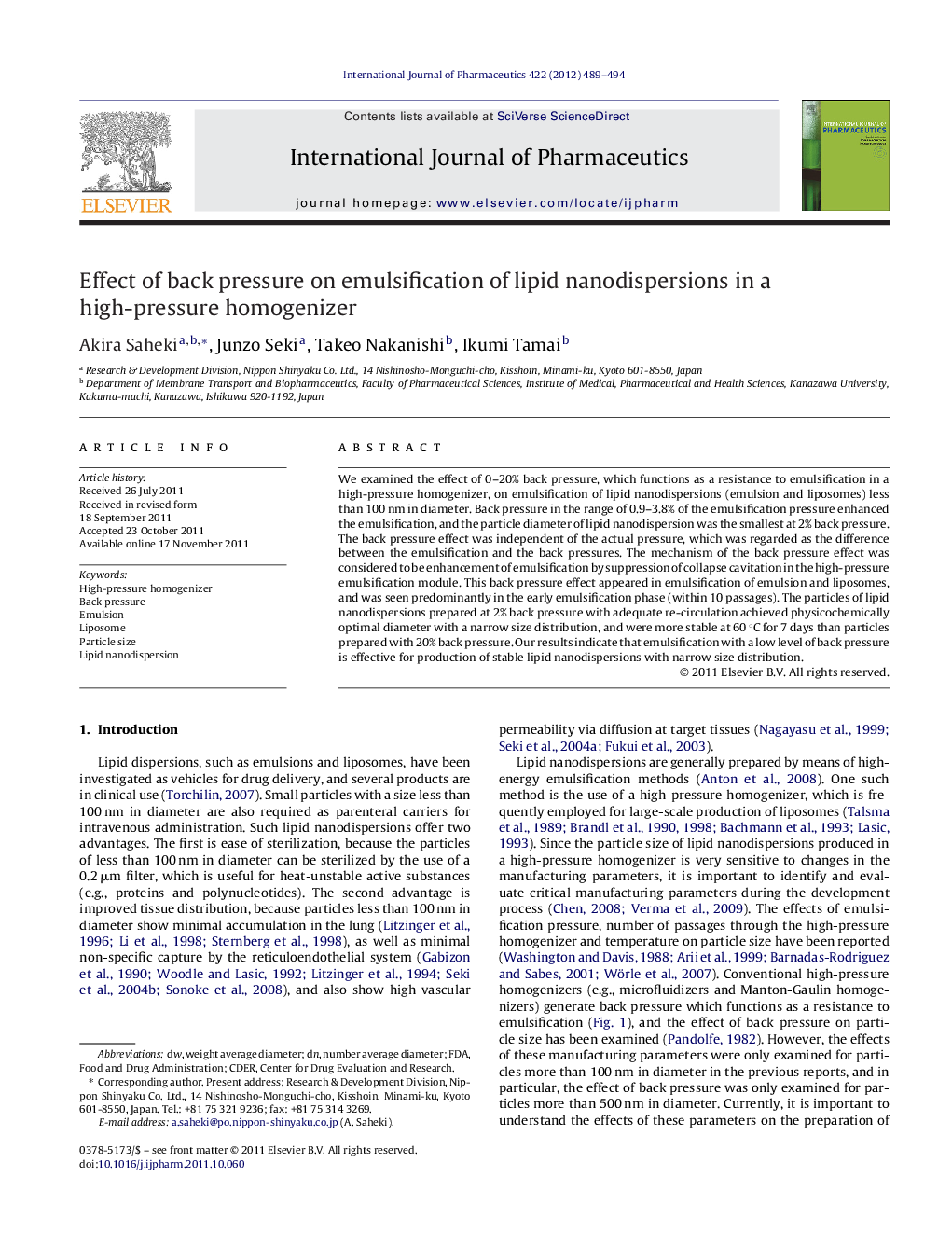| Article ID | Journal | Published Year | Pages | File Type |
|---|---|---|---|---|
| 2503135 | International Journal of Pharmaceutics | 2012 | 6 Pages |
We examined the effect of 0–20% back pressure, which functions as a resistance to emulsification in a high-pressure homogenizer, on emulsification of lipid nanodispersions (emulsion and liposomes) less than 100 nm in diameter. Back pressure in the range of 0.9–3.8% of the emulsification pressure enhanced the emulsification, and the particle diameter of lipid nanodispersion was the smallest at 2% back pressure. The back pressure effect was independent of the actual pressure, which was regarded as the difference between the emulsification and the back pressures. The mechanism of the back pressure effect was considered to be enhancement of emulsification by suppression of collapse cavitation in the high-pressure emulsification module. This back pressure effect appeared in emulsification of emulsion and liposomes, and was seen predominantly in the early emulsification phase (within 10 passages). The particles of lipid nanodispersions prepared at 2% back pressure with adequate re-circulation achieved physicochemically optimal diameter with a narrow size distribution, and were more stable at 60 °C for 7 days than particles prepared with 20% back pressure. Our results indicate that emulsification with a low level of back pressure is effective for production of stable lipid nanodispersions with narrow size distribution.
Graphical abstractFigure optionsDownload full-size imageDownload as PowerPoint slide
